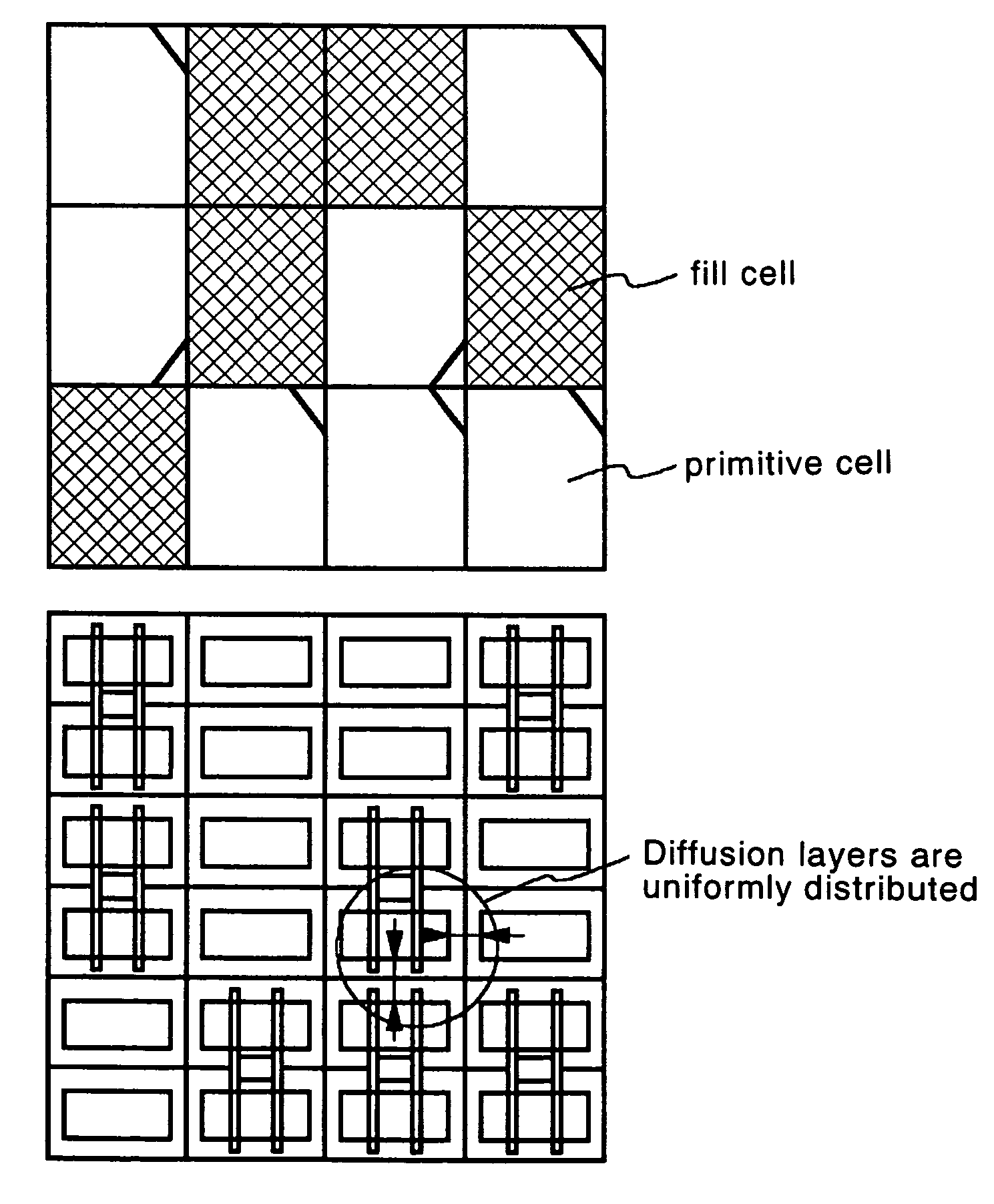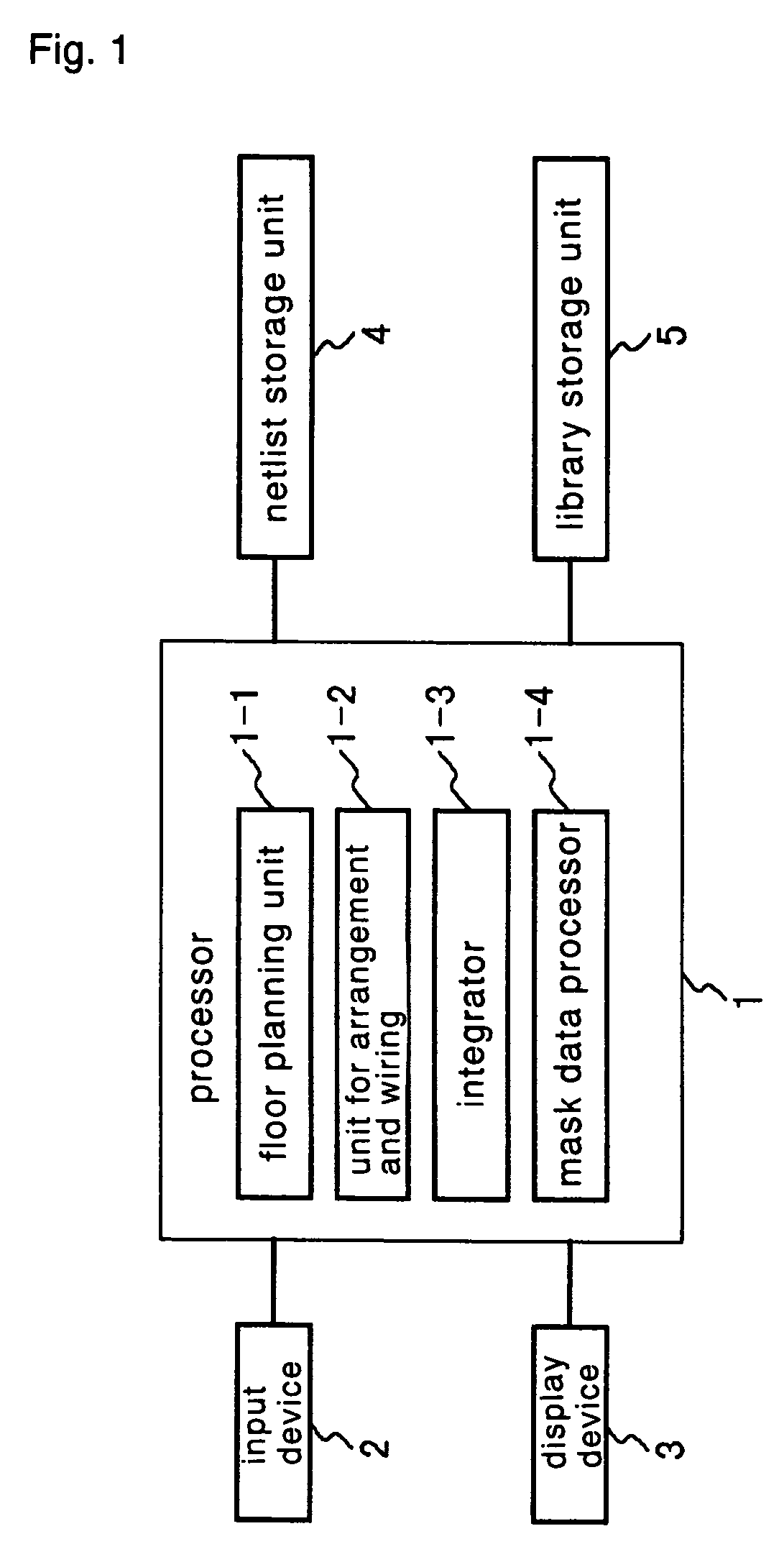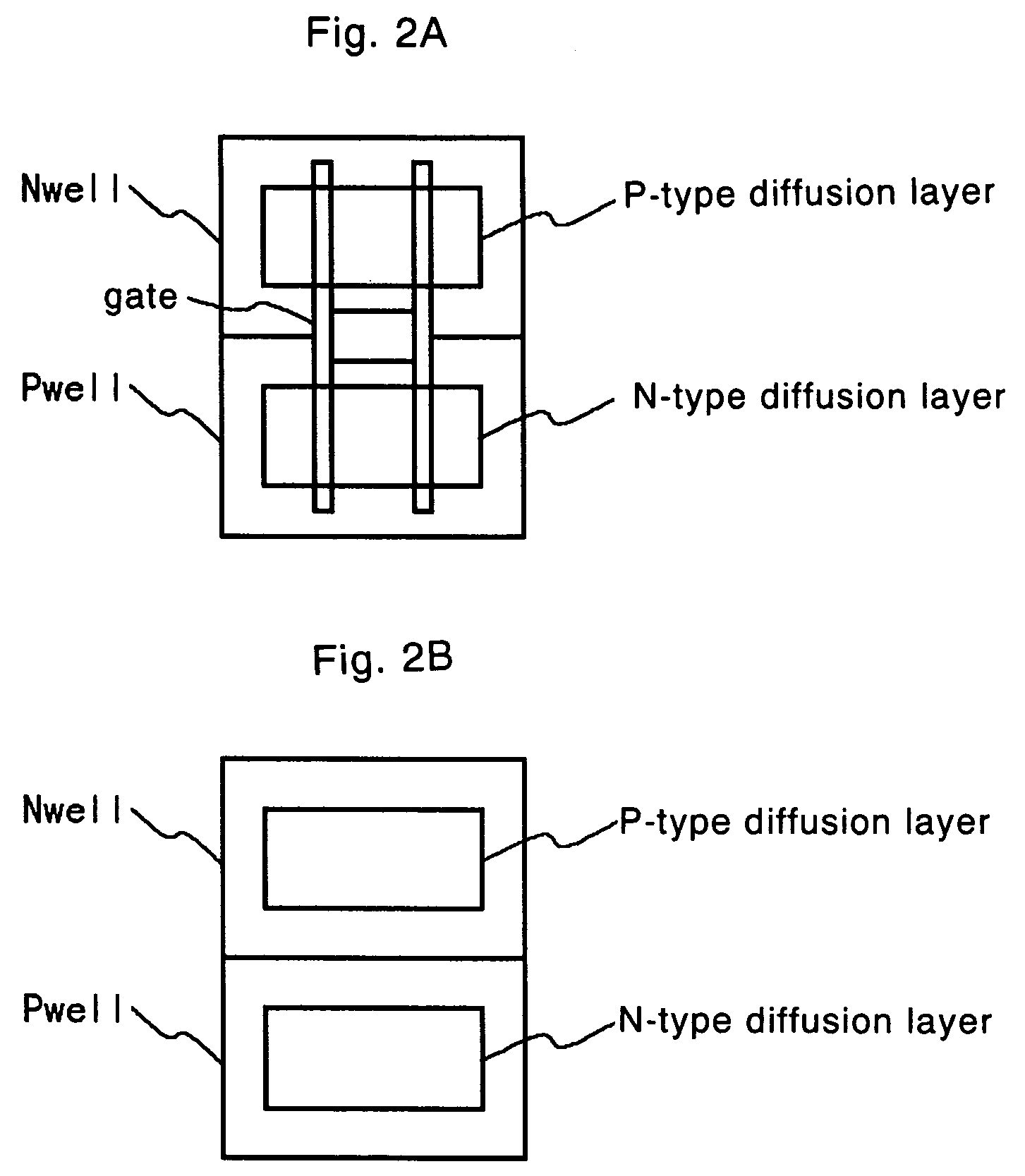Method and device for producing layout patterns of a semiconductor device having an even wafer surface
a technology of layout pattern and semiconductor device, which is applied in the direction of cad circuit design, total factory control, instruments, etc., can solve the problems of excessive different amount of abrasion of the wafer surface, and filling cells composed only of wells in vacant areas, so as to reduce the trouble of arithmetic processes
- Summary
- Abstract
- Description
- Claims
- Application Information
AI Technical Summary
Benefits of technology
Problems solved by technology
Method used
Image
Examples
Embodiment Construction
[0024]As shown in FIG. 1, the device and for producing a layout pattern of the present invention comprises processor 1, input device 2, display device 3, netlist storage unit 4, and library storage unit 5.
[0025]Processor 1 comprises floor planning unit 1-1, unit for arrangement and wiring 1-2, integrator 1-3, and mask data processor 1-4. Processor 1 may consist of, for example, a computer that, in accordance with a program, executes processing for producing the layout pattern of the present invention described hereinbelow.
[0026]Processor 1 executes processing in accordance with a program that has been provided in advance, by commands supplied from input device 2 or the like, and the results of this processing are indicated by display device 3. In addition, processor 1 refers, as necessary, to data stored in netlist storage unit 4 and library storage unit 5.
[0027]Input device 2 is used for supplying data and commands as input to processor 1.
[0028]Display device 3 is controlled by pro...
PUM
 Login to View More
Login to View More Abstract
Description
Claims
Application Information
 Login to View More
Login to View More - R&D
- Intellectual Property
- Life Sciences
- Materials
- Tech Scout
- Unparalleled Data Quality
- Higher Quality Content
- 60% Fewer Hallucinations
Browse by: Latest US Patents, China's latest patents, Technical Efficacy Thesaurus, Application Domain, Technology Topic, Popular Technical Reports.
© 2025 PatSnap. All rights reserved.Legal|Privacy policy|Modern Slavery Act Transparency Statement|Sitemap|About US| Contact US: help@patsnap.com



